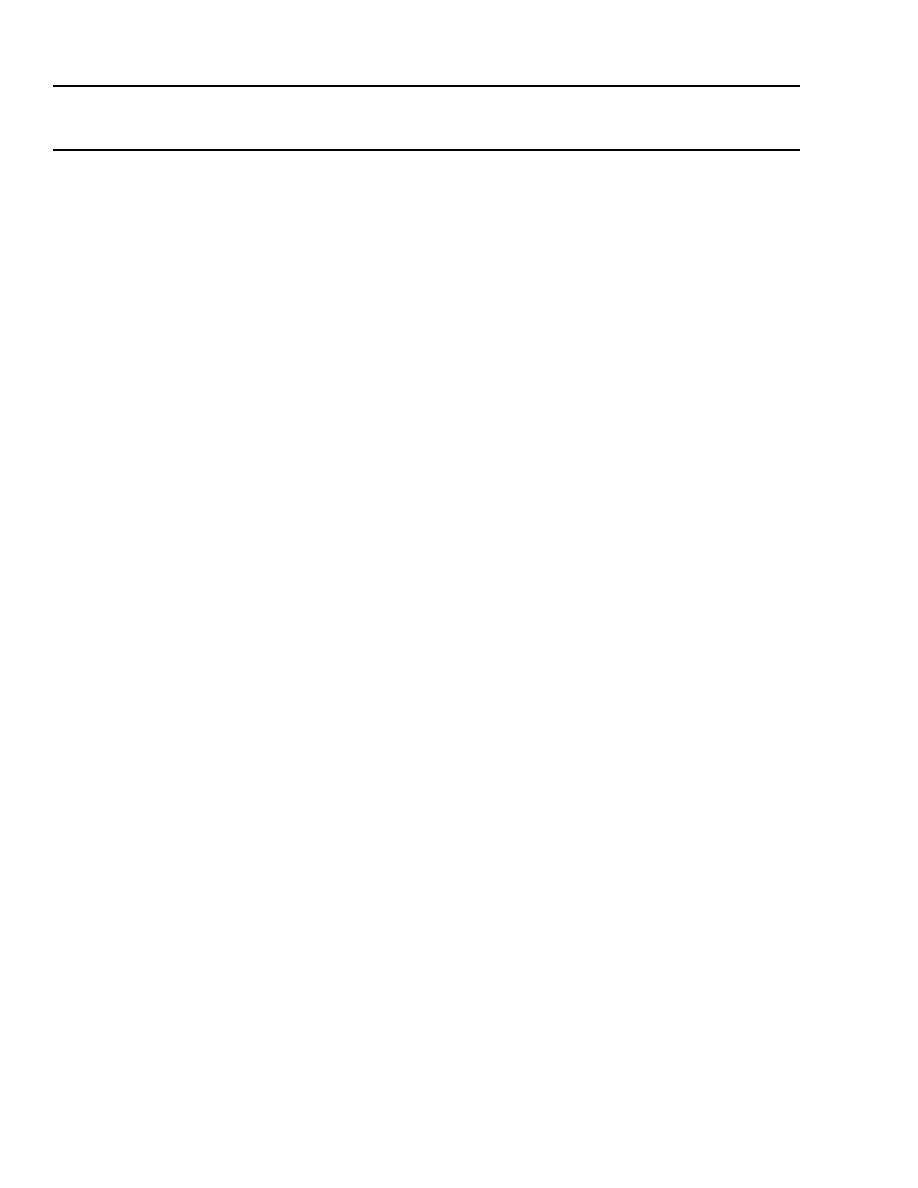
TM 5-3810-295-34
Table 2-1
Troubleshooting--Continued
MALFUNCTION
TEST OR INSPECTION
CORRECTIVE ACTION
Step 2.
Locate noise. Listen for internal damage. Possible sources of damage are water pump, piston
rings, and rod bearings.
Repair or replace damaged parts.
5. COOLANT TEMPERATURE TOO LOW.
Step 1.
Test the thermostat as described in TM 5-3810-295-12.
Replace faulty thermostat per instructions contained in TM 5-3810-295-12.
Step 2
Check for damaged thermostat seals. Damaged seals will cause a continued flow of coolant past
thermostat.
Replace thermostat seals as described in TM 5-3810-295-12.
6. COOLANT TEMPERATURE TOO HIGH (ENGINE OVERHEATS).
Step 1.
Check engine coolant level.
If coolant level is too low add antifreeze mixture
Step 2.
Water pump V belt missing or slipping.
Replace or adjust V belt a described in TM 5-3810-295-12.
Step 3.
Check radiator and heater hoses for leaks, crack, or loose connections.
Repair or replace damaged hoses and hose lamps.
Step 4.
Check radiator core for damage or excessive dirt.
Refer to paragraph 3-13 (crane) paragraph 13-35 (carrier) and replace or clean radiator as
required.
Step 5.
Rotate water pump by hand and listen for metallic grinding noise. If pump does not rotate
smoothly the bushing is probably worn.
Refer to paragraph 3-19 (crane) or paragraph 13-16 (carrier) for repair or replacement of water
pump.
Step 6.
Remove thermostat and test as described in TM 5-3810-295-12.
Replace defective thermostat as described in TM 5-3810-295-12.
Step 7.
Check engine lubricant level. If engine lubricant level is low it will cause engine to overheat.
Check for oil leaks and repair required. Fill as necessary per LO 5-3810-295-12-1, -2, and -3.
Step 8.
Internal water lines may be restricted.
Drain and flush cooling system as described in TM 5-3810-295-12.
Step 9.
Check to see if engine is operating under excessive strain due to overload, brake drag or operating
too long in low gear.
Eliminate cause of excessive strain.
7. ENGINE EMITS EXCESSIVE SMOKE.
Step 1.
Check for dirty air cleaner or restricted air intake lines.
Clean or replace air cleaner as described in TM 5-3810-295-12 and/or remove restriction from
air intake lines.
Step 2.
Check for excessive exhaust back pressure due to restr iction in exhaust system.
Remove restriction from exhaust system.
Step 3.
Check for restriction in fuel lines.
Remove restriction from fuel lines.
Step 4.
Check for plugged or damaged fuel injectors.
Clean, adjust or replace fuel injectors as described in paragraph 3-61 (crane) or paragraph
14-12 (carrier).
Step 5.
Check for head gasket blow-by due to loose head bolts or damaged gasket.
Replace head gasket as described in paragraph 4-9 (crane) or paragraph 14-16 (carrier) or
tighten head bolts if required.
Step 6.
Check for broken piston ring(s).
Replace rings as described in paragraph 4-38 (crane) or paragraph 14-31 (carrier), or overhaul
engine, if necessary, as described in DMWR-5-3810-295.
Change 1 2-3

